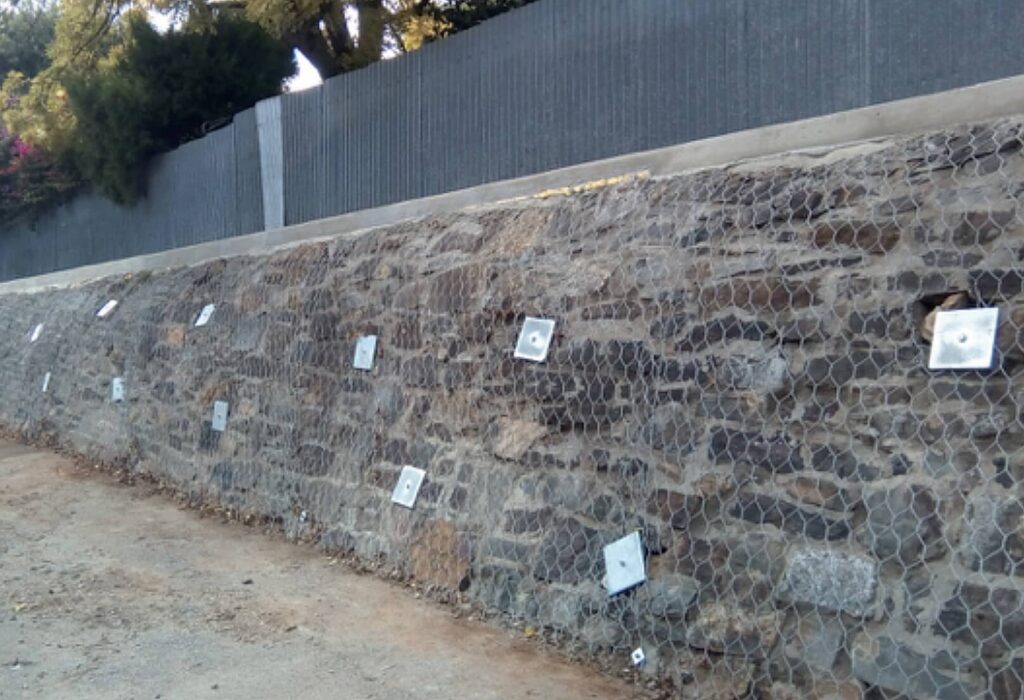Why Williams Anchors Are the Top Selection for Reliable Structure Solutions
Reliable Rock Anchors for Secure and Secure Structures
In the realm of civil engineering, the duty of trustworthy rock anchors can not be overemphasized, as they are essential in establishing secure and secure foundations throughout a range of applications. These anchors not just help with lots transfer from structures to bedrock but likewise offer critical resistance against all-natural forces, consisting of wind and seismic activity. Recognizing the different kinds of rock anchors, their specific applications, and the ins and outs of installation and upkeep is vital for maximizing their performance. What elements should be taken into consideration when choosing one of the most suitable securing solution for a provided task?
Kinds Of Rock Anchors

Easy anchors count on the weight of the framework and the surrounding dirt or rock to give resistance. They are usually utilized in applications where marginal movement is expected. Energetic supports, on the various other hand, entail the application of stress via a high-strength cable or pole, creating a pre-stressed problem in the support. This type is particularly advantageous in vibrant atmospheres, such as landslide-prone areas.
Grouted anchors are another considerable group, wherein a steel bar or cable television is placed into a pierced opening, adhered to by a cementitious cement. As soon as cured, the cement bonds with the surrounding rock, creating a robust anchoring system. Each sort of rock support supplies distinctive advantages based upon the details geological problems and architectural needs, consequently playing an important function in the total integrity and longevity of constructed centers.
Applications in Building And Construction
Rock supports play a critical role in numerous building and construction applications, offering important assistance and security in diverse environments. These cutting-edge options are utilized in tasks ranging from large-scale facilities developments to smaller sized domestic frameworks. One of the primary applications of rock supports is in the stabilization of slopes and retaining wall surfaces, where they help protect against soil disintegration and keep architectural stability.
Additionally, rock supports are important in safeguarding foundations for bridges, passages, and high-rise structures, ensuring they can stand up to lateral pressures such as wind and seismic task. Their adaptability allows for setup in tough geological conditions, making them excellent for projects in hilly or rocky terrains.

Secret Choice Criteria
Picking the appropriate rock support for a specific application requires careful factor to consider of numerous essential requirements. The geological problems of the website must be extensively assessed. Recognizing rock type, strength, and security is important to ensure that the anchor will certainly carry out efficiently under tons problems.

One more vital aspect is the corrosion resistance of the anchor products. In atmospheres subjected to moisture or chemicals, making use of corrosion-resistant materials will certainly prolong the life-span of the supports and preserve structural stability in time.
Additionally, the support's installment technique should line up with the project's needs and restraints. Relieve of installation, along with the potential influence on surrounding frameworks, need to be thought about.
Setup Techniques
Effective setup techniques are important for the successful efficiency of rock supports. Appropriate installation ensures that the supports attain the preferred load-bearing ability and security within the geological conditions. The primary step in the setup procedure entails website evaluation, where geological studies figure out the rock type, problem, and any prospective obstacles.
When the website is assessed, the ideal exploration technique have to be picked-- options include rotary exploration, ruby drilling, or percussion boring. The selection depends on rock firmness and environmental factors to consider. Precise exploration deepness and angle are vital to guarantee that the anchors align with structural demands and lots distribution.
After drilling, the following stage entails cleaning the borehole to get rid of particles, which can compromise bond strength. Following this, the support is placed, and if required, a grout or resin is injected to improve bond. The treating time of these materials need to be adhered to, making certain that content the anchors achieve full stamina prior to any kind of lots is used.
Maintenance and Examination
Correct maintenance and evaluation of rock anchors are vital to ensure their long-term efficiency and dependability (Williams Anchors). Routine assessments help identify any potential concerns, such as corrosion, variation, or structural exhaustion that could jeopardize the honesty of the anchoring system
Regular inspections must be carried out at defined periods, taking right into account ecological aspects and the specific application of the rock anchors. Visual examinations click here for more need to concentrate on the subjected sections of the supports, looking for indicators of corrosion, splits, or other abnormalities. In addition, it is critical to assess the surrounding geological problems to detect any shifts in dirt or rock that may affect anchor performance.
In some cases, advanced techniques such as load screening or non-destructive testing might be required to establish the anchors' load-bearing capacity and overall health. Appropriate documents of examination searchings for, upkeep tasks, and any fixings or replacements performed is essential for recurring analysis and conformity with sector standards.
Final Thought
In verdict, dependable rock supports play an important function in ensuring protected and stable structures throughout numerous building applications. By properly moving lots and enhancing security against lateral pressures, these anchors contribute significantly to the longevity and honesty of structures such as bridges, passages, and retaining wall surfaces. Strategic selection, installation, and maintenance of rock anchors are vital for optimizing performance and guarding public safety, inevitably underscoring their importance in modern-day design practices.